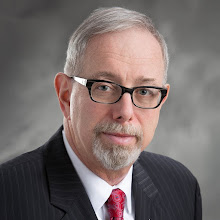FOR PROFIT HEALTH CARE MAKES ME SICK
Those sentiments were on a bumper sticker that graced a neighbor's Volvo. This was a few years ago when I was living in Shaker Heights. The fun fact? The car's owner was a physician.
I'm pretty sure this guy didn't sell suits for a living and only practiced medicine as a volunteer. He certainly didn't accept chickens and vegetables for his services. He didn't object to being paid, and judging from his house, paid well, for his services. His objection was to anyone else profiting from the delivery of health care.
Get in line.
Depending upon who you ask
* The doctors are overpaid
* The hospitals are palaces
* The insurance companies are crooks
* The drug companies are gauging us
Heck, the only people universally loved and appreciated are us insurance agents.
Yes, I'm kidding.
My neighbor the doctor was, however, right about one thing. This debate is not about medicine or the delivery of health care. It is about money. Who pays? Whose ox is gored? Who can make a small payment today to protect a major profit center for years? One of my goals is to move our conversation to include the actual delivery of health care.
One of our problems, as a society, is our complete aversion to personal sacrifice. Our state is having a huge problem balancing its budget. Governor Strickland is looking at adding fees and slots for income. To cut expenses he is taking a hatchet to any program that isn't backed by a strong lobby.
One of the governor's budget goals includes a change in the open enrollment health insurance program. Under the Federal Health Insurance Portability and Accountability Act (HIPAA), people who have lost their health insurance after eighteen continuous months of coverage, are guaranteed the opportunity to purchase a policy. This is particularly relevant if the individual has significant preexisting conditions. In Ohio, the options are the "Ohio Basic" and the "Ohio Standard". These are over priced awful policies.
Governor Strickland wants to have these policies, sold to some of our unhealthiest citizens, capped at 1.5 times the base rate. In other words, if we lower the premiums a touch, thousands of unhealthy uninsured individuals would be able to buy insurance. Isn't this great?
Well, it depends. The Ohio Department of Insurance's actuary determined that 52,000 additional consumers would purchase coverage through the open enrollment program. The problem is that the rates for policies in the standard individual market would increase by 5.5%.
Are you willing to pay 5 1/2% more so that someone else's insurance might be cheaper? If your family policy is $500 per month, we are talking about $330 per year. Regular readers know that the equation is always the same. If you increase money out, you gotta bring more money in. So will 52,000 more people be able to afford coverage? Of course not. The rate decrease for the unhealthy people, and the small increase for the rest of us, will be phased in over several years. G-d forbid you or I should have to make a sacrifice.
The debate isn't about the delivery of health care. It is only about money. That is the real world.
If you really want to know where the money is in health care. watch TV. Not the shows, the commercials. Scooters, lift chairs, and medications that run $8 to $10 a pill dominate prime time. I can track trends just by watching the ads on the evening news.
A new commercial has me a little nervous. It features lots and lots of smiling senior citizens. The reassuring voice over tells us that the reason they are so happy is because of the money they've saved due to Medicare Part D, the Rx benefit.
Other than actors, the only senior citizens that happy about Medicare Part D are pharmaceutical company retirees. Designed to enrich and protect the drug companies, insurance companies, and certain well-connected insurance marketers (AARP comes to mind), any benefit a senior citizen gets from Medicare Part D is strictly accidental. None of the rules favor the consumer. And yet, I've got senior citizens dancing across the screen and this announcer extolling the virtues of Part D. Of course, the commercial is paid for by the pharmaceutical companies.
Coincidentally, the drug companies recently met with President Obama and have proposed an $80 billion deal. That is $80 billion dollars over ten years. $30 billion will help to pay for brand name drugs for senior citizens who fall in to the coverage gap, the notorious "doughnut hole". The other $50 billion will be used to help offset expected costs associated with the uninsured.
Are those numbers real? We'll never really know. But the drug companies think they have a deal. They will make another small, difficult to quantify sacrifice in hopes of a huge payoff. Their goal is to have health care reform to be as profitable as Medicare Part D. The $80 billion deal is strictly voluntary and depends on the enactment of a comprehensive health reform package acceptable to the industry.
Again, here in the real world, we are actually talking about money not the delivery of health care. Well if we are going to talk about money, we should all be forced to use real numbers.
DAVE
Questions or suggestions for future topics?
www.bogartcunix.com
Subscribe to:
Post Comments (Atom)





No comments:
Post a Comment